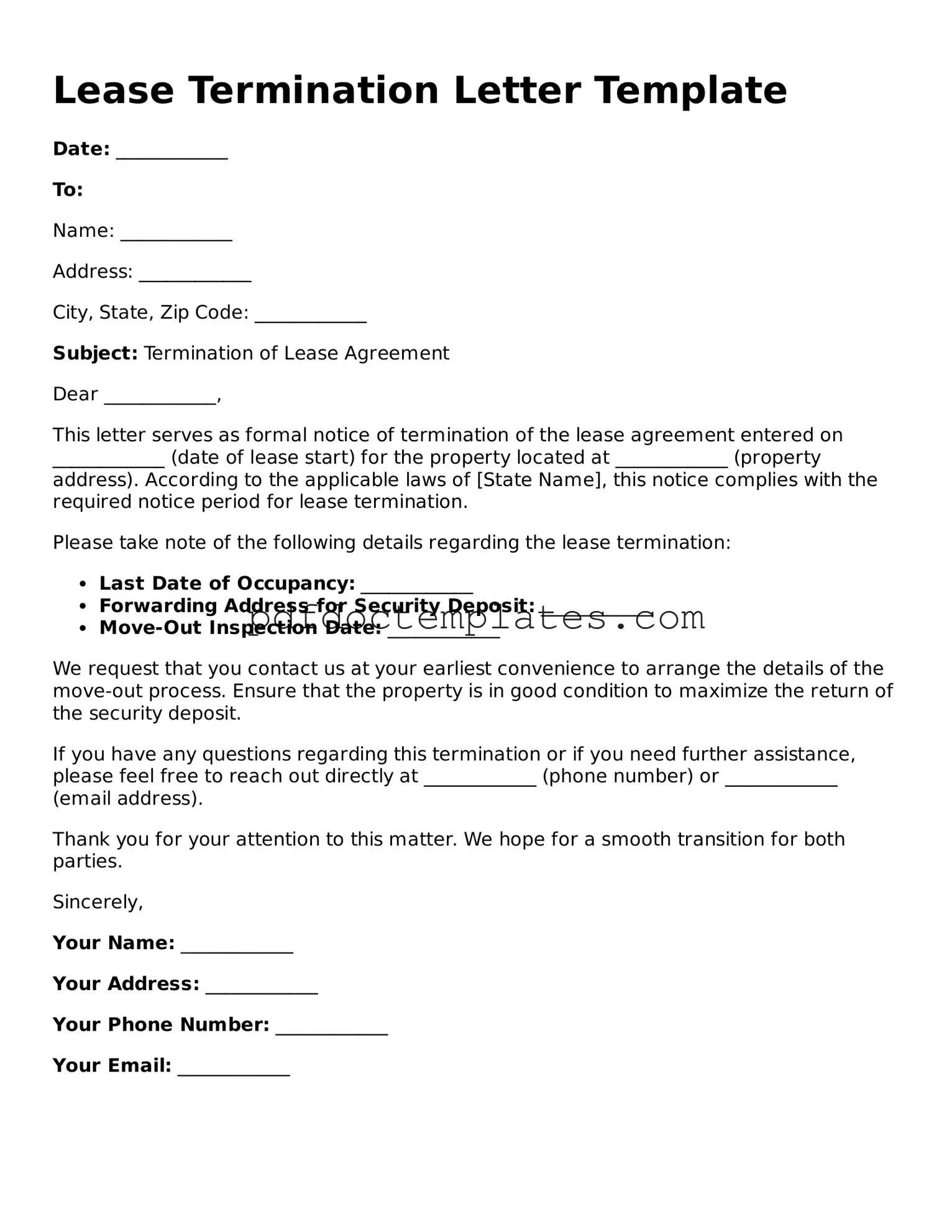Lease Termination Letter Template
Date: ____________
To:
Name: ____________
Address: ____________
City, State, Zip Code: ____________
Subject: Termination of Lease Agreement
Dear ____________,
This letter serves as formal notice of termination of the lease agreement entered on ____________ (date of lease start) for the property located at ____________ (property address). According to the applicable laws of [State Name], this notice complies with the required notice period for lease termination.
Please take note of the following details regarding the lease termination:
- Last Date of Occupancy: ____________
- Forwarding Address for Security Deposit: ____________
- Move-Out Inspection Date: ____________
We request that you contact us at your earliest convenience to arrange the details of the move-out process. Ensure that the property is in good condition to maximize the return of the security deposit.
If you have any questions regarding this termination or if you need further assistance, please feel free to reach out directly at ____________ (phone number) or ____________ (email address).
Thank you for your attention to this matter. We hope for a smooth transition for both parties.
Sincerely,
Your Name: ____________
Your Address: ____________
Your Phone Number: ____________
Your Email: ____________
